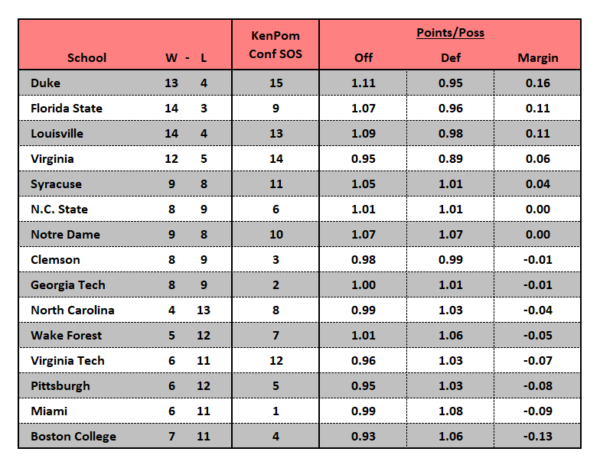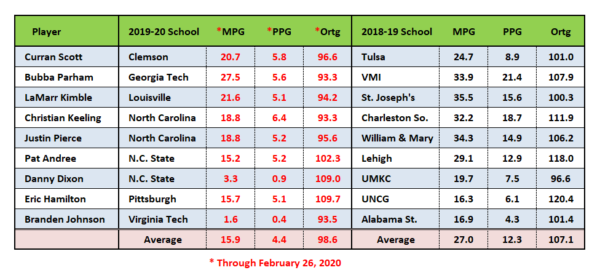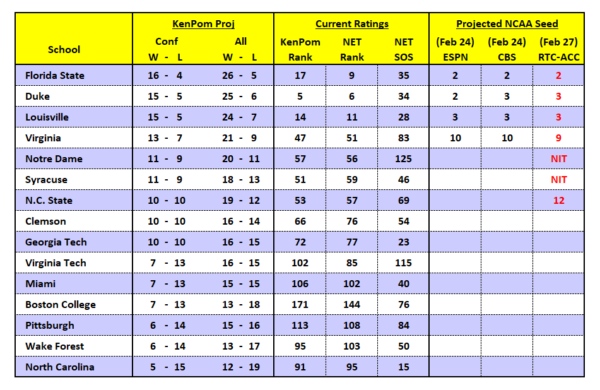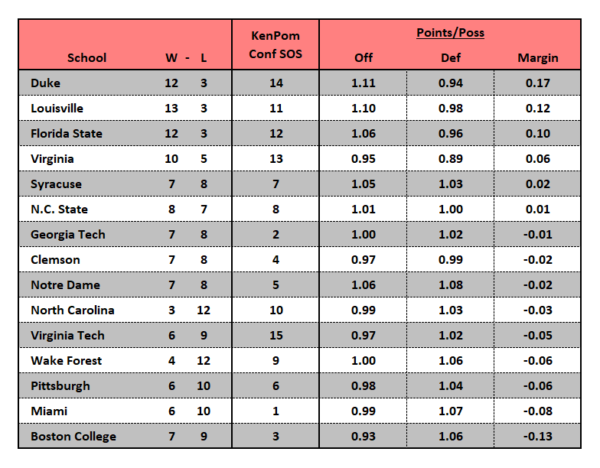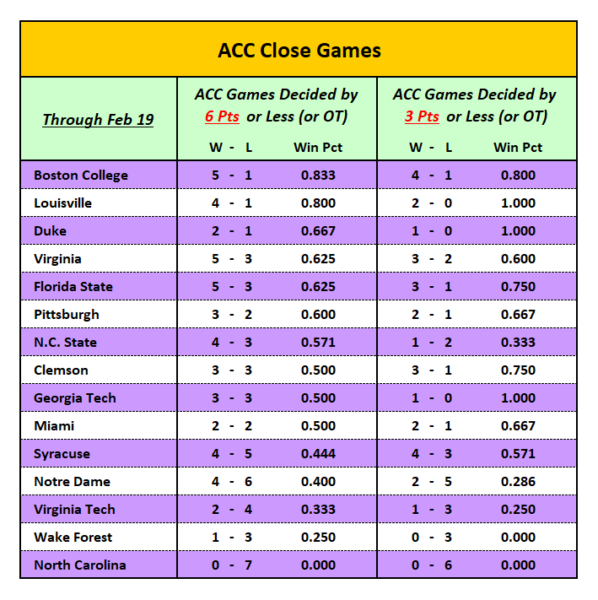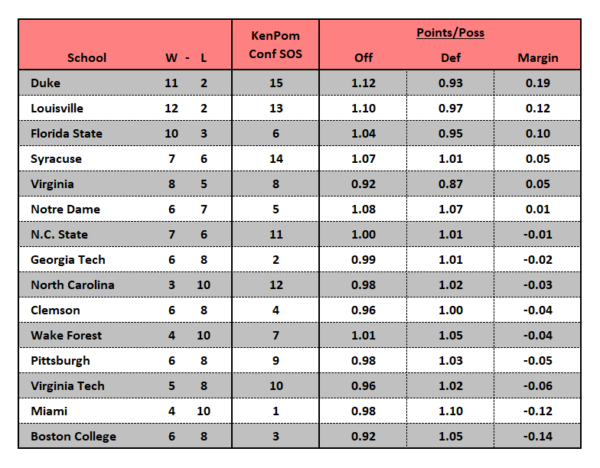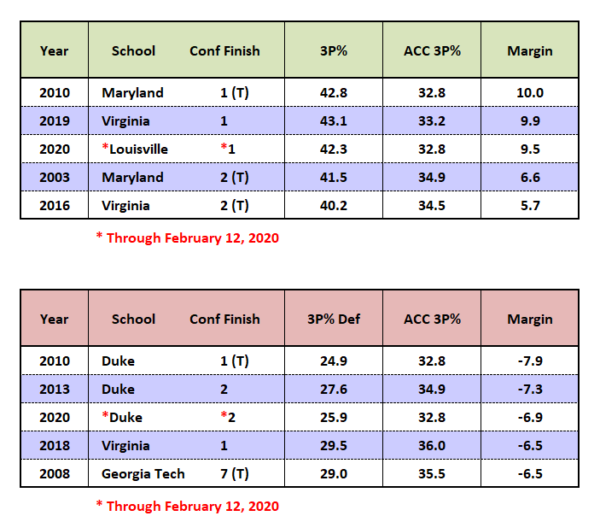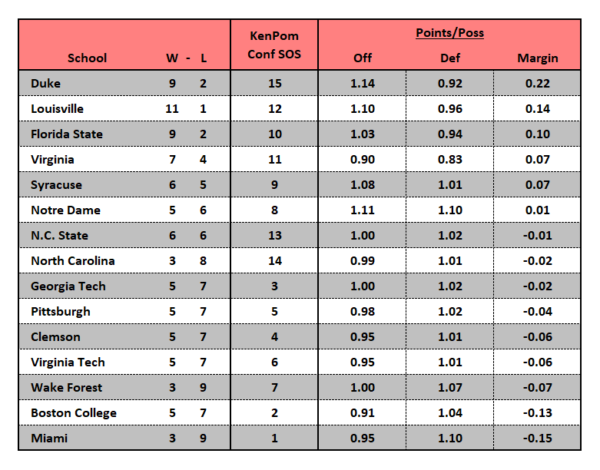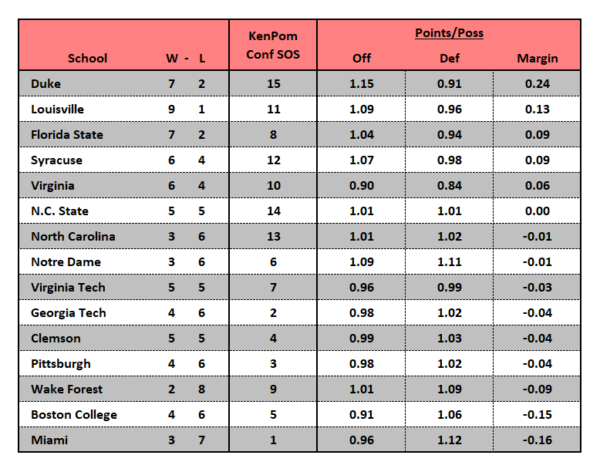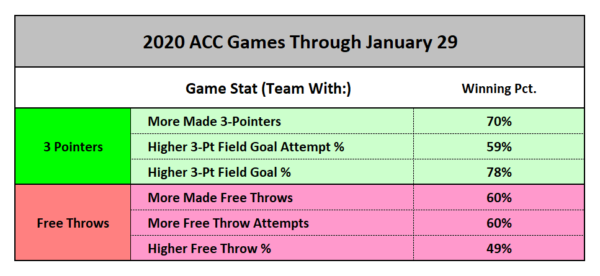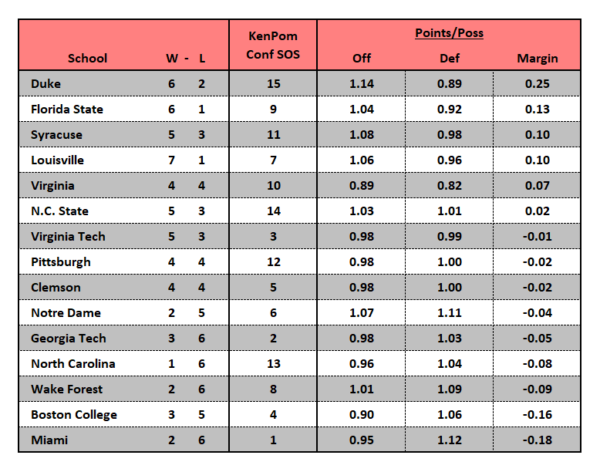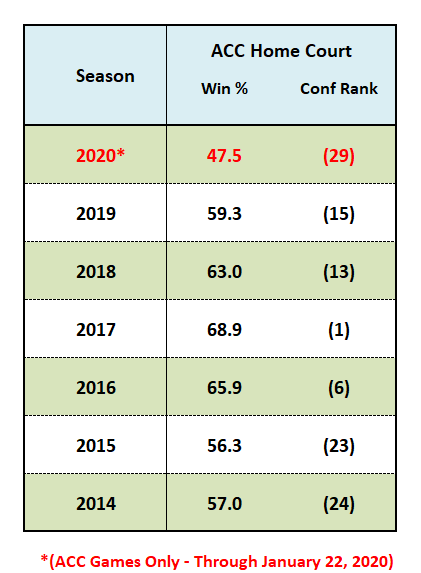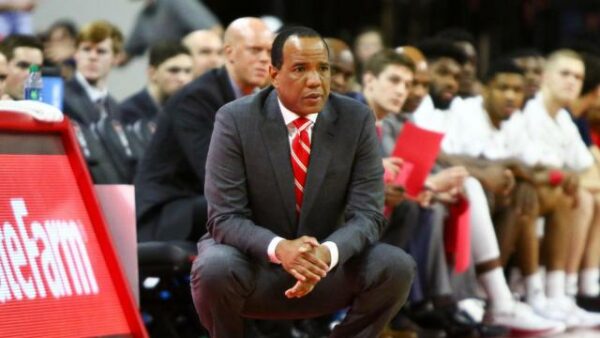Inside the ACC Numbers: Final Edition
Posted by Brad Jenkins on March 10th, 2020Here is the final edition of our weekly view at the current ACC standings with a focus on which teams are playing better or worse than their conference records may indicate. We will also delve into some advanced metrics to share a few interesting notes on teams, statistics, and trends around the conference. With the regular season in the books, this week we will compare how each ACC squad performed in the second half of league play, with an eye on the teams that might excel in the ACC Tournament in Greensboro. Finally, we will examine the ACC standings and project what it may mean for teams’ ultimate postseason aspirations.
Note: All numbers are current for games played through Saturday, March 8.
Current Standings
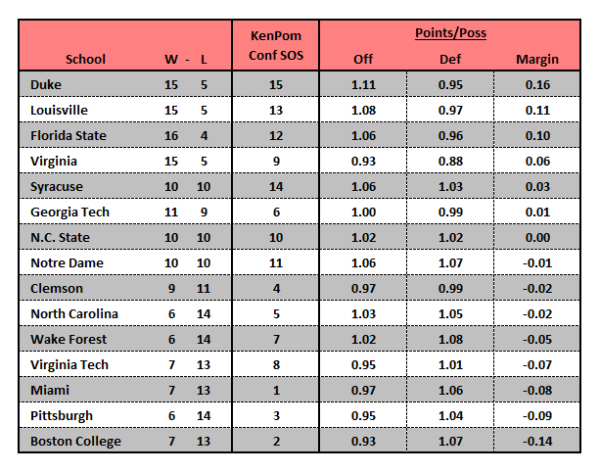
Congrats to Tony Bennett’s crew for posting the ACC’s best defense for the fourth year in a row, and for the sixth time in the past seven seasons. On the other end of the floor, Duke had the most effective offense for the first time since 2015, ending up with the best overall point per possession margin (PPM) in ACC play. That was primarily accomplished by a league record five conference wins by more than 30 points, and the fact that Duke faced the ACC’s easiest slate of league games. Virginia was able to match the Blue Devils in the win column with an incredible 8-2 mark in games decided by three points or fewer (or overtime). While there may be some luck involved in such a performance, there’s also the fact that Virginia simply executed better during endgame situations than did its opponents. That’s a trait that will give the Cavaliers confidence in the postseason. At the other end of the spectrum we find North Carolina, whose PPM performance would suggest a record close to .500, but the Tar Heels were done in by an unfortunate 0-6 mark in one-possession outcomes. But the biggest story of the regular season is Florida State. Hats off to Leonard Hamilton for leading the Seminoles to their first-ever ACC regular season title.
Advanced Statistic of the Week: Who’s Hot and Who’s Not?
Heading into this week’s ACC Tournament, it’s a good time to compare recent team performance to how schools were playing earlier in the year. Below we break down the ACC season into two fairly even timeframes to see which squads have improved and which have regressed.
Read the rest of this entry »




























